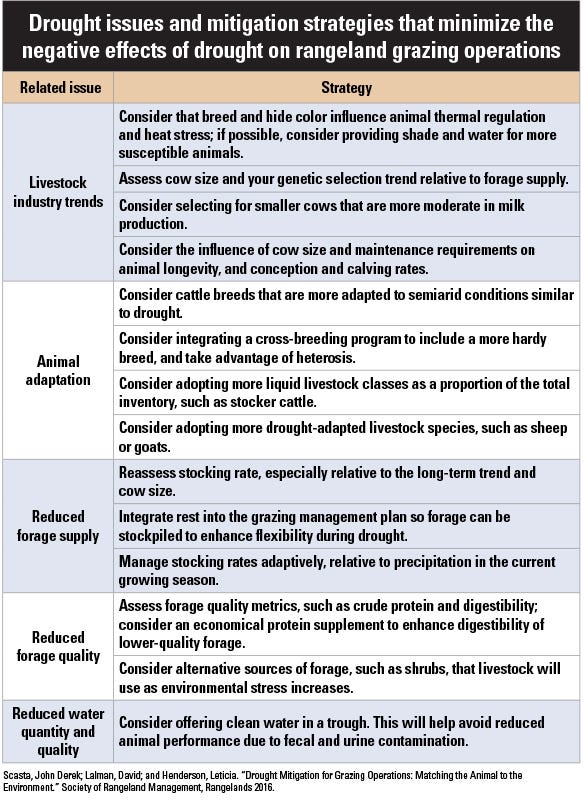July 26, 2018

Cattle producers often adapt to precipitation variability, especially on Western rangelands. Common drought management decisions include reducing herd size and feeding harvested forage. Unfortunately, these methods do not alleviate the stress of long-term drought. And climate forecasts predict that drought frequency and severity will increase in coming years. To discover further drought strategies for grazing operations, three university livestock and range specialists teamed up to research how cattle producers can match an animal to its environment.
“The livestock industry has increasingly provided incentives for the selection of cattle that may not be the most suited to harsh rangeland environments,” says John Derek Scasta, an Extension range specialist in the Department of Ecosystem Science and Management at the University of Wyoming. “Therefore, it is important to weigh the pros and cons of animal traits, and understand how animals interact with the environment to develop integrated drought management plans.”
Scasta compiled research data with David Lalman, an Extension beef cattle specialist in the Department of Animal Science at Oklahoma State University; and Leticia Henderson, a livestock and range Extension agent with Oregon State University.

The team found that because grazed forage remains the least expensive nutrient source for cattle, cow size and milk production must match forage resources. Additionally, EPDs (expected progeny differences) and selection indexes can be used to manage maternal traits, such as mature weight and maintenance energy requirements.
Grazing adjustments
Genetic and breed characteristics can take years to build in a cattle herd. For more immediate actions, consider adoption of more liquid livestock classes — such as stocker cattle — as a portion of the total herd inventory. Also, if water quality becomes low due to limited water quantity, providing livestock with clean water piped into a trough increases animal performance.
It is also important to monitor precipitation during both the growing and dormant seasons for forages. Precipitation amounts during the winter can inform stocking rate decisions for the next growing season. Grazing plans can also be assisted by the long-range climate forecast for the Pacific Ocean, and its expected impact on precipitation around the world.
Drought mitigation report
Find further research conclusions and recommendations for drought mitigation on grazing operations by reading Scasta, Lalman and Henderson’s full journal paper, “Drought Mitigation for Grazing Operations: Matching the Animal to the Environment,” at the article page on the ScienceDirect website.
Hemken writes from Lander, Wyo.
About the Author(s)
You May Also Like




